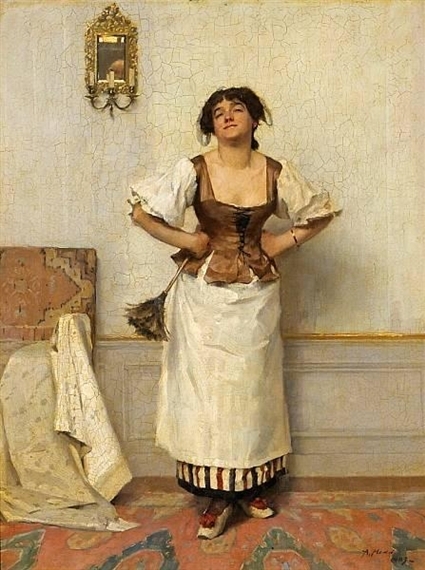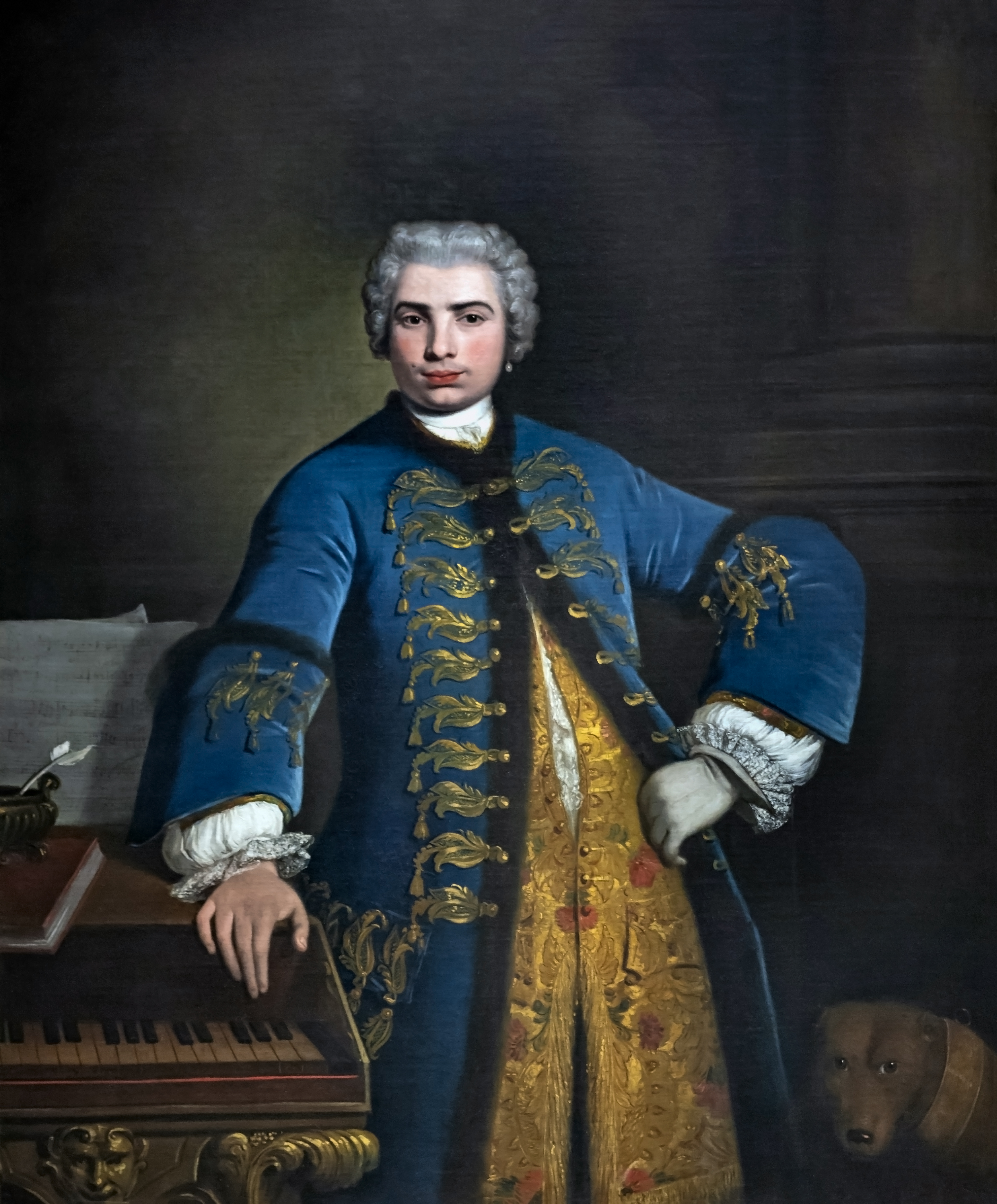|
Soprano
A soprano () is a type of classical singing voice and has the highest vocal range of all voice types. The soprano's vocal range (using scientific pitch notation) is from approximately middle C (C4) = 261 Hertz, Hz to A5 in Choir, choral music, or to soprano C (C6) or higher in operatic music. In four-part chorale style harmony, the soprano takes the highest part, which often encompasses the melody. The soprano voice type is generally divided into the coloratura soprano, coloratura, soubrette, lyric soprano, lyric, spinto soprano, spinto, and dramatic soprano, dramatic soprano. Etymology The word "soprano" comes from the Italian word ''wikt:sopra, sopra'' (above, over, on top of),"Soprano" ''Encyclopædia Britannica'' as the soprano is the highest pitch human voice, often given to the leading female roles in operas. "Soprano" refers ... [...More Info...] [...Related Items...] OR: [Wikipedia] [Google] [Baidu] |
Mezzo-soprano
A mezzo-soprano (, ), or mezzo ( ), is a type of classical music, classical female singing human voice, voice whose vocal range lies between the soprano and the contralto voice types. The mezzo-soprano's vocal range usually extends from the A below middle C to the A two octaves above (i.e. A3–A5 in scientific pitch notation, where middle C = C4; 220–880 Hz). In the lower and upper extremes, some mezzo-sopranos may extend down to the F below middle C (F3, 175 Hz) and as high as "high C" (C6, 1047 Hz). The mezzo-soprano voice type is generally divided into the coloratura, lyric, and dramatic. History While mezzo-sopranos typically sing secondary roles in operas, notable exceptions include the title role in Georges Bizet, Bizet's ''Carmen'', Angelina (Cinderella) in Gioachino Rossini, Rossini's ''La Cenerentola'', and Rosina in Rossini's ''The Barber of Seville, Barber of Seville'' (all of which are also sung by sopranos and contraltos). Many 19th-century French- ... [...More Info...] [...Related Items...] OR: [Wikipedia] [Google] [Baidu] |
Voice Type
A voice type is a classification of the human singing voice into perceivable categories or groups. Particular human singing human voice, voices are identified as having certain qualities or characteristics of vocal range, vocal weight, tessitura, vocal timbre, and vocal transition points (''passaggio''), such as breaks and lifts within the voice. Other considerations are physical characteristics, speech level, scientific testing, and vocal register. A singer's voice type is identified by a process known as voice classification, by which the human voice is evaluated and thereby designated into a particular voice type. The discipline of voice classification developed within European classical music and is not generally applicable to other forms of singing. Voice classification is often used within opera to associate possible roles with potential voices. Several different voice classification systems are available to identify voice types, including the German ''Fach'' system and the ... [...More Info...] [...Related Items...] OR: [Wikipedia] [Google] [Baidu] |
Boy Soprano
A boy soprano (British and especially North American English) or boy treble (only British English) is a young male singer with a voice in the soprano range, a range that is often still called the treble voice range (in North America too) no matter how old. Origins In the Anglican and English Catholic liturgical traditions (in which girls and women did not sing in church choirs), young male choristers were normally referred to as "trebles" rather than as boy sopranos, but today the term "boy trebles" is increasingly common (girls with high voices are trebles too). The term "treble" derives from the Latin ', used in 13th and 14th century motets to indicate the third and highest range, which was sung above the tenor part (which carried the tune) and the alto part. Another term for that range is '. The term "treble" itself was first used in the 15th century. Trebles have an average range of A3 to F5 (220–700 Hz). The term ''boy soprano'' originated with Henry Stephen C ... [...More Info...] [...Related Items...] OR: [Wikipedia] [Google] [Baidu] |
Coloratura Soprano
A coloratura soprano () is a type of operatic soprano voice that specializes in music that is distinguished by agile run (music), runs, leaps and Trill (music), trills. The term ''coloratura'' refers to the elaborate ornamentation of a melody, which is a typical component of the music written for this voice. Within the coloratura category, there are roles written specifically for lighter voices known as lyric coloraturas and others for larger voices known as dramatic coloraturas. Categories within a certain vocal range are determined by the size, weight and color of the voice. Coloratura is particularly found in vocal music and especially in operatic singing of the 18th and 19th centuries. Lyric coloratura soprano A very agile light voice with a high upper extension, capable of fast vocal coloratura. Lyric coloraturas have a range of approximately middle C (Scientific pitch notation, C4) to "high F" (F6). Such a soprano is sometimes referred to as a soprano leggero if her vocal tim ... [...More Info...] [...Related Items...] OR: [Wikipedia] [Google] [Baidu] |
Sopranist
A sopranist (also known as male soprano) is a male singer who is able to sing in vocal tessitura of a soprano, usually through falsetto or head voice technique. This voice type is a specific kind of countertenor. In rare cases an adult man may be able to sing in the soprano range using his normal or modal voice (high chest voice) and not falsetto due to endocrinological reasons, like Radu Marian, or as a result of a larynx that has not completely developed as is allegedly the case of Michael Maniaci. Voice A sopranist is able to sing in the soprano vocal range which is approximately between C4 and C6, though at times may expand somewhat higher or lower. Men of all voice types can possess the wide-ranged and effective falsetto or head voice needed to produce the contralto, mezzo-soprano and soprano vocal ranges. Some countertenors can sing up into the female vocal tessituras using the modal register (normal singing production) and need not employ any falsetto. Controvers ... [...More Info...] [...Related Items...] OR: [Wikipedia] [Google] [Baidu] |
Soubrette
A soubrette is a female minor stock character in opera and theatre, often a pert lady's maid. By extension, the term can refer generally to any saucy or flirtatious young woman. The term arrived in English from Provençal via French, and means "conceited" or "coy". Theatre In theatre, a soubrette is a comedy character who is vain and girlish, mischievous, lighthearted, coquettish and gossipy—often a chambermaid or confidante of the ingénue. She often displays a flirtatious or even sexually aggressive nature. The soubrette appeared in commedia dell'arte scenarios, often in the role of Columbina, where the actress would provide the details of her behaviour and dialogue. From there, she moved to the works of Molière, which were influenced by the Commedia; the role of Dorine in '' Tartuffe'' (1664) fits the description. A famous example, though a hundred years later, is Suzanne in Beaumarchais' '' Le Mariage de Figaro'' (1784). Opera In classical music and opera, the term ''s ... [...More Info...] [...Related Items...] OR: [Wikipedia] [Google] [Baidu] |
Dramatic Soprano
A dramatic soprano is a type of operatic soprano with a powerful, rich, emotive voice that can sing over, or cut through, a full orchestra. Thicker vocal folds in dramatic voices usually (but not always) mean less agility than lighter voices but a sustained, fuller sound. Usually this voice has a lower tessitura than other sopranos, and a darker timbre. They are often used for heroic, often long-suffering, tragic women of opera. Dramatic sopranos have a range from approximately low A ( A3) to "high C" (C6).Coffin (1960) Some dramatic sopranos, known as Wagnerian sopranos or High dramatic sopranos (high in this case referring to the maturity of the voice, rather than the tessitura or range), have an exceptionally big voice that can assert itself over a large orchestra (of more than 80 or even 100 players). These voices are substantial, often denser in tone, extremely powerful and, ideally, evenly balanced throughout the vocal registers. Wagnerian sopranos usually play mythic hero ... [...More Info...] [...Related Items...] OR: [Wikipedia] [Google] [Baidu] |
Lyric Soprano
A lyric soprano is a type of operatic soprano voice that has a warm quality with a bright, full timbre that can be heard over an orchestra. The lyric soprano voice generally has a higher tessitura than a soubrette and usually plays ingenues and other sympathetic characters in opera. Lyric sopranos have a range from approximately middle C ( C4) to "high D" (D6). This is the most common female singing voice. There is a tendency to divide lyric sopranos into two groups: light and full. Light lyric soprano A light-lyric soprano has a bigger voice than a soubrette but still possesses a youthful quality.Nashville Opera There are a wide variety of roles written for this voice, and they may sing |
Castrato
A castrato (Italian; : castrati) is a male singer who underwent castration before puberty in order to retain a singing voice equivalent to that of a soprano, mezzo-soprano, or contralto. The voice can also occur in one who, due to an endocrinological condition, never reaches sexual maturity. Castration before puberty (or in its early stages) prevents the larynx from being transformed by the normal physiological events of puberty. As a result, the vocal range of prepubescence (shared by both sexes) is largely retained, and the voice develops into adulthood in a unique way. Prepubescent castration for this purpose diminished greatly in the late 18th century. Methods of castration used to terminate the onset of puberty varied. Methods involved using opium to medically induce a coma, then submerging the boy into an ice or milk bath where the procedure of either twisting the testicles until they atrophied, or complete removal via surgical cutting was performed (however the comp ... [...More Info...] [...Related Items...] OR: [Wikipedia] [Google] [Baidu] |
Countertenor
A countertenor (also contra tenor) is a type of classical male singing voice whose vocal range is equivalent to that of the female contralto or mezzo-soprano voice types, generally extending from around G3 to D5 or E5, although a sopranist (a specific kind of countertenor) may match the soprano's range of around C4 to C6.A sopranist is a term, widely used falsely, used to describe a countertenor whose vocal range is so high it is equivalent to that of a soprano. Countertenors often have tenor or baritone chest voices, but sing in falsetto or head voice much more often than they do in their chest voice. The nature of the countertenor voice has radically changed throughout musical history, from a modal voice, to a modal and falsetto voice, to the primarily falsetto voice that is denoted by the term today. This is partly because of changes in human physiology ( increase in body height) and partly because of fluctuations in pitch. The term first came into use in England during ... [...More Info...] [...Related Items...] OR: [Wikipedia] [Google] [Baidu] |
Opera
Opera is a form of History of theatre#European theatre, Western theatre in which music is a fundamental component and dramatic roles are taken by Singing, singers. Such a "work" (the literal translation of the Italian word "opera") is typically a collaboration between a composer and a libretto, librettist and incorporates a number of the performing arts, such as acting, Theatrical scenery, scenery, costume, and sometimes dance or ballet. The performance is typically given in an opera house, accompanied by an orchestra or smaller musical ensemble, which since the early 19th century has been led by a conducting, conductor. Although musical theatre is closely related to opera, the two are considered to be distinct from one another. Opera is a key part of Western culture#Music, Western classical music, and Italian tradition in particular. Originally understood as an sung-through, entirely sung piece, in contrast to a play with songs, opera has come to include :Opera genres, numerous ... [...More Info...] [...Related Items...] OR: [Wikipedia] [Google] [Baidu] |



